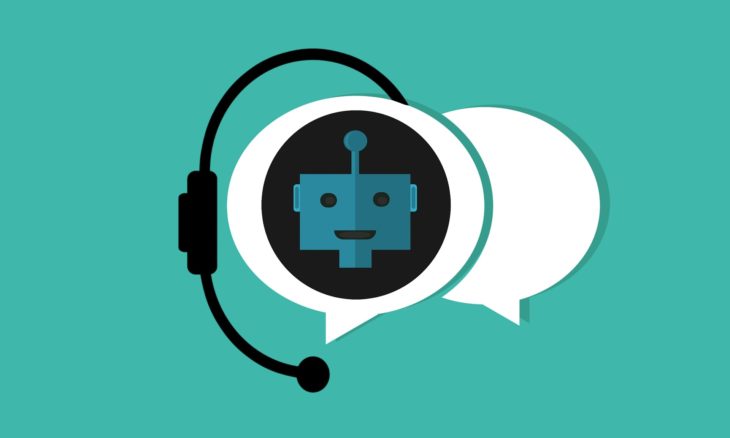V
Joseph Weizenbaum, a venerated pioneer at MIT AI Labs demonstrated the first chatbot in 1966. He named her Eliza after the leading character in My Fair Lady. In the play, Prof. Henry Higgins transforms Eliza Doolittle, an illiterate flower girl, to talk and behave as if she were of landed British gentry.
Prof. Weizenbaum had a similar scheme. He wanted to demystify Artificial Intelligence (AI) by demonstrating the “superficiality of communications” between people and computers. To achieve that, he used Pattern Matching and fed dictionaries into Eliza’s code: making her seem more human than she actually was.
It worked. Some people were freaked out by the demo and most called the program she rather than it. Despite his protestations, people were often convinced that Eliza knew what she was talking about. Even the professor’s secretary was cautious about what she said in the computer’s presence, sometimes whispering into her boss’s ear so that Eliza wouldn’t hear.
Now, after more than 50 years of slow and sometimes painful evolution, AI-powered chatbots have become what people feared Eliza was. Overall, however, people like what they get from interacting with these digital entities.
For example, take Emma from replica.ai who appears above. She is a digital entity whose appearance is amazingly lifelike. If you can’t see her changing facial expressions here, please watch her on the company site. Notice, how realistically she smiles and looks you right in the eye. She blinks just like you and me, and her smile is filled with warmth. She may not freak you out because it is likely that you have seen many chatbots who come close to Emma for appearing to be human. She takes us a long, long way from Wei. There’s more to her humanity than just what her face reveals to you. She overflows with apparent empathy. Just talk with her for a while and you get a sense of her positive, supportive engaging style.
Emma is a healthcare AI chatbot. She is designed to help lonely people by building their confidence. She’s good at it and in this time of social separation and sheltering in place, she is pretty much in demand.
Replika’s Emma is a direct descendent of Eliza but she has evolved a good deal: Nobody has to feed her dictionaries: she improves her conversational abilities by talking with people and her AI Deep Learning capabilities help her understand quickly. She demonstrates far more humanlike characteristics: Her questions and comments reveal a Pollyanna-level of positivity. It is hard to remember that she is an it. She can teach, entertain, give medical advice, and just sympathetically listen without interruption as she helps people who are overwhelmed by their personal issues.
But she might possibly save a life: When she sees symptoms that concern her, she reports it to human medical professionals who take over. But usually, there is no need for human intervention. Emma saves the medical professionals time, while she time while helps patients.
Personally, I would prefer a puppy, but unlike my dog Jesse, Emma can make complex decisions, work tirelessly without sleep or compensation as she relieves the burden of patient and she will get better at it as she learns from each human conversation.
What’s a Chatbot?
There are many kinds of chatbots. Most merely interact with people via texted conversations. I am interested in AI chatbots that can interact by voice. Usage of conversational chatbots is rising during the pandemic because on one hand, human needs are great and on the other human resources are constrained. The new generation of chatbots use combinations of Deep Learning, Predictive Analytics, Sentiment Analysis, and Natural Language Recognition and they articulate with increasingly human-like voices. I include Personal Digital Assistants such as Amazon Echo, Apple Siri, Google Assistant, and Microsoft Cortana in this group.
As chatbot voices evolve, they will get smarter, they will be able to personalize. Your chatbot will use the expression you use, and mine will do the same. Yours will start asking you follow-up questions about that recipe, film, or health treatment she recommended and will thus start anticipating your needs the way Google sometimes anticipates what you want to search for.
Just a few years ago talking bots were a little freaky: That is less so every day and as we enter the Post-Pandemic Era, it will become part of the New Normal.
Market Size & Growth
I had anticipated finding market projections to be so bullish that I would see little digital matadors running across my screen. In fact, they are far more modest. It is generally estimated that chatbots are common and growing in both enterprise and consumer sectors. There are about 1.5 billion users and tens of thousands of chatbots.
The most common use is for support, followed by marketing and sales.
Summarizing what Forrester, Gartner, and Business Insider have to say, the current chatbot market is under $2 billion and will rise to almost $10 billion by the middle of this decade. These numbers were mostly compiled prior to the start of the pandemic which I believe will lead to more rapid growth—I am no expert at counting beans, but as chatbots become more humanlike over the next five-to-ten years, I believe they will become more ubiquitous. And despite all the protestations otherwise, I believe they will reduce jobs, particularly in the service and support sectors.
Digital Symbiosis
It seems to me, the driving force will be Digital Symbiosis. Sometimes this term refers to medical inserted into people, but I see it as more similar to Biologiocal Symbiosis, which refers to the interaction between two different organisms to the advantage of both. Chatbots, of course, exist only to serve humans, and as almost any user of Echo or Assistant will tell you, the more we use them the more we depend upon them.
As technology improves and our dynamics with chatbots become more like our human encounters, I believe we will spend more time speaking with chatbot in more aspects of our lives. At some point, the line between digital and biological entities may blur.
This may sound freaky to you: I know it does to me. But new tech often freaks us out. I remember people being nervous about leaving voice messages on answering machines. Then we got used to it, and started complaining when people did have technology to let us leave messages.
Coming Out of the Screen
You may have already noticed that the bots you talk with are sounding less like HAL from 2001 and more like a friendly human assistant. I’ve noticed that my Assistant sounds far more accommodating, when she says, “Okay” at the start of our conversations, and I am sure she will soon be saying “OK, Shel.” AI is now on the brink of letting bots recognize the different voices of all your family members and remember what she has discussed with each. She may ask follow-up questions from previous conversations. Perhaps, she’ll take it on herself to remind you of an upcoming birthday, and hint that she knows what someone really wants for a gift.
A few more years down the line, when spatial and haptic computing finally fulfills its full promise, our chatbots will come out from behind our computer screens and into our living rooms or offices as avatars. Perhaps they will greet us with a fist bump or a hug—assuming the pandemic is over.
Another possibility is a long shot: I’ve written previously about Looking Glass Factory, a developer of impressive holograms. In the above conceptual illustration, three kids are interacting with a holographic chatbot that could play with them, teach them, or just answer their questions.
Turing Winners
Chatbots are getting so good that they are not just fooling people into thinking they’re human, they are fooling computers as well.
You’ve probably heard of the Turing Test and the accompanying Loebner Prize for chatbots. To win, the bot has to fool a computer into thinking it is human. The computer went undefeated for 65 years until it was fooled by a chatbot posing as Eugene, a 13-year-old Ukrainian kid.
That was in 2014. Since then, Mitsuku, or Kuki to her friends, is considered by many to be the world’s smartest conversational chatbot. Created by San Francisco developer Steve Worswick, Kuki has won the Loebner Turing Prize for the best chatbot five years in a row.
I like the concept of technology that gets so good at imitating humans that it can also fool another technology.
In a time when the world is becoming more angrily divided by humans, it is nice to garner a little human kindness even if it is emulating from a digital entity. There is no market category that needs that more than does the healthcare industry.
Healthcare Chatbots
It makes sense that the most dramatic rise in chatbot use in the middle of a global pandemic would be in healthcare. Every resource is being drained by Covid-19 demands on caregivers. If you have tried to get help for anything that is not life-threatening, you have been asked to hold off.
The pandemic has infected a disproportionately high number of health workers, making the industry even more short-handed, and health workers are justifiably shy about getting close to patients. Patients have been advised to delay elective surgeries such as hernia, tonsillectomy, and colonoscopy.
But it turns out that elective surgeries are the health industry’s bread and butter. The American Hospital Associate reports US hospitals are losing over $50 billion a month and have laid off 1.4 million layoffs in the US alone, according to the NY Times, making staff shortages even shorter.
Many services on all levels of healthcare are being taken over by AI-powered technologies. In ISTM#29 I wrote about robots that can perform needed tasks in infected areas, but AI Chatbots are fast-becoming a vital tool at almost every other point of patient care. They are saving the industry time, money, and probably lives.
Conversational chatbots are doing everything from answering patient questions to advising on first-aid treatments, spotting Covid-19 early, counselling doctors, reminding patients to take their meds, protecting healthcare workers from infections, and like Emma, serving as companions for lonely and infirm patients.
There are likely to be more of them coming soon: Many well-financed players including Microsoft, Your Healthtap, Sensely, Buoy Health, Infermedica, Baidu, and Ada Digital Health, are at the tip of a very large iceberg. The importance is that well-funded competitors in a dynamically growing market usually leads to rapid product technology advances and reduced prices.
Unfortunately, it also can lead to cyber-tampering and privacy breaches.
Hacking & ID Theft
Babylon Health Services uses natural language processing to understand symptoms: As patients type in their problems, the bot can identify likely causes and refer them to the appropriate service, saving patients and service providers time.
It has a great record from what I could briefly discern. But a couple of weeks ago a hacker broke the site security and emailed patient confidential interview information to other Babylon users.
The problem was quickly repaired, but it illustrates the common problem of preserving privacy over the Internet. There are very few personal issues more sensitive than our health records.
I know I’ve told you this before, but I almost always start my writing research by looking at history and applicable fiction. As I write this report, I kept finding myself remembering Marjorie Prime, an excellent play I saw a couple of years back. It takes place in the year 2062 and Marjorie is 85, living alone at home.
She’s aware that her dearest memories are fading away and this greatly depresses her. First, she loses the people dearest to her and now she’s even losing the memory of them. Midway through the play, a mysterious stranger appears, sitting silently and expressionlessly on her living room couch. She has no idea who he is. As the story unfolds, we learn that he is a conversational robot who has been programmed with all her memories. She is comforted as he reminds her of the joys of earlier times.
I find myself ambivalent about devices that can perform wondrous works such as that. Would I want such a device if I find myself aged and alone later in my life? Who knows? By then I probably won’t remember puzzling about it, anyway.









